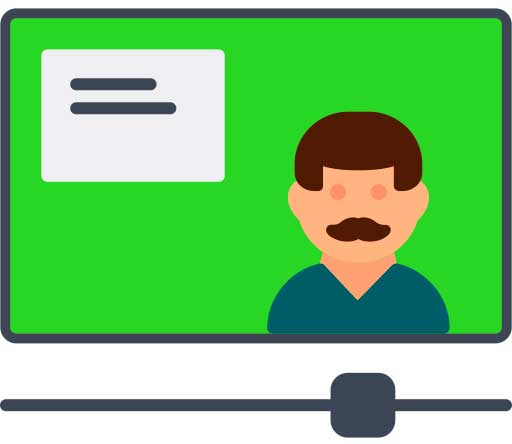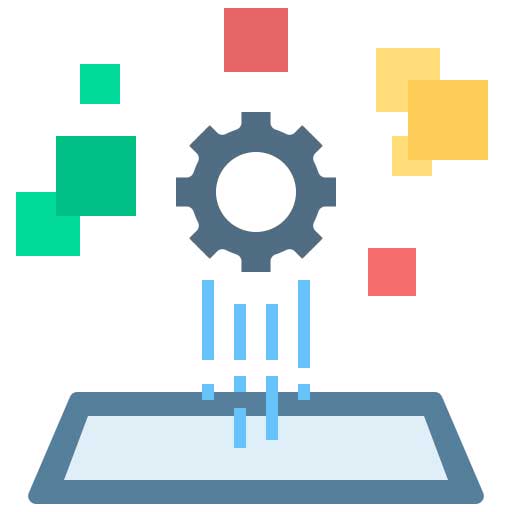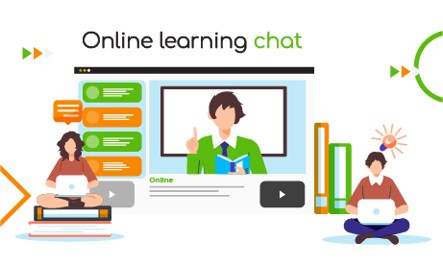|
How to teach virtual classes on a learning platform?
Introduction to Digital Content Delivery through E-learning digital platforms
|
Demand for virtual classes is higher and higher and it will keep on increasing due to the multiple benefits in terms of convenience, time scheduling and logistics that they represent.
Digital platforms have the potential to reduce costs associated with printing, transporting, and materials, yet it is fundamental to make sure that its delivery is adequate and effective to make the most of the delivery mean.
Increasingly, students of all ages demand access to a type of online learning that is designed to suit them and their needs.
This means that e-learning platforms have to be more flexible in order to be able to adapt to students of all ages and type and ensure that they can successfully complete the course.
|
|

Image source: Flaticon.com
|
Understand the full capabilities of your learning platform
|
Make sure you as teacher understand fully your LMS (Learning Management System) or LCMS (Learning Content Management System) platform functionalities and know how to use it. Consider training yourself in the use of the platform by following online tutorials in order to create confidence in your audience and avoid spending precious lesson time searching for specific functionalities.
The LMS platform allows quick, simple, and efficient sharing additional learning resources (video, exercises, ppts, etc.) therefore it is wise to use such functionalities especially with those students who are extremely proficient and eager to know more thus avoiding losing their attention.
In LMS platforms classes can be recorded thus ensuring that even absentees can catch up, moreover those lessons can be also presented by your institution to create learning repositories and position your training academy on social media.
|
|

Image source: Flaticon.com
|
Consider virtual classes sizes
|
Even if there is no real limitation in numbers for virtual classes, it is true that with smaller classes it is easier to make students participate and keep an eye on their contributions via chat or queries.
|
|

Image source: Flaticon.com
|
Be confident, look right at the webcam, smile and interact
|
Even if you are a greatly experienced teacher, the use of this new modality can imply some impasse in the way you teach. It is highly recommendable that you practice your delivery and that you are prepared to the worst-case scenario (you having a monologue and still have to be convincing!).
Confidence is fundamental: the teacher must reassure students that they are in good hands! It is important to look straight at the camera, have an appropriate background and adequate light.
Feel relaxed and smile in order to motivate and catch students’ attention and interaction, which is extremely important as a two-way dialogue helps students get the most out of the virtual lessons. In this sense, it is a good principle to kindly ask students to turn their camera one, yet due to GDPR issues this cannot be imposed.
|
|

Image source: Flaticon.com
|
Overview of digital platforms and their role in content delivery
Why are you using a digital platform?
|
Nowadays, digital content platforms have an extremely important role in personal, academic, and corporate settings.
While e-learning platforms can be applied in virtually any corporate training program, yet they are particularly useful in training related to technical skills, products, long-life learning education, and new onboarding since the improved access to materials offered by these online formats promotes learning and permits flexibility for the students.
Let’s review what are the factors influencing your choice according to the purpose you want to pursue.
- For entertainment – this will have a strong emotional component for the audience, making it very shareable.
- For education – this will allow for a wide reach. Highly shareable.
- For persuasion – This is slightly more emotionally charged; content that gradually changes the mind of the audience.
- For conversion – Content is rationally presented to ignite a decision-making process.
|
|

Image source: Flaticon.com
|
Who is your target audience and what is the problem you’re solving for this audience?
- Content is entirely dependent on the individual, therefore knowing who is your student is essential to engage them and make the delivery experience relevant to them.
- Once you know your audience it will be easier to design material to solve their needs.
- What are the objectives and outcomes that you want to achieve? Knowing the “why” behind your training strategy ensures that you fully understand how to proceed.
|
|

Image source: Flaticon.com
|
How do you plan to present the content to your target audience?
|
Are you going to use a friendly or professional tone? Create your material around what you feel best aligns with the personalities of your students and create your material to attract their attention.
You should think about the whole course: do you cover enough topics? Is there a variety of material? Is it enough? Is it updated?
When choosing a digital platform for learning you should make sure it is interesting and actually helps students reach the goals.
Choose a platform with good and interesting content, that is fun to use and suitable for different ways of learning. Good content contains information that you will remember and that will help your students understand.
|
|

Image source: Flaticon.com
|
How much should you pay for a digital learning platform?
|
There is no unique answer, even if the price is always one of the main concerns when choosing a LMS platform, it really depends on your budget and the quality/easiness you want to achieve.
Bearing in mind that as we will see later on there are also completely free options which might work if the need arises.
You should also evaluate if you will need a scalable platform or not, because changing it afterwards might result in double work and double payment!
|
|

Image source: Flaticon.com
|
Free E-learning Platforms: some examples
 Moodle: Moodle.org Moodle: Moodle.org
Moodle stands for Modular Object-Oriented Dynamic Learning Environment, this essentially means a system that educational institutions use to deliver courses and learning material to students. |
 |
PROS:
- Designed to support both teaching and learning
- Easy to use
- Multilingual capabilities
- Moodle can support the needs of both small classes and large organisations.
- Committed to safeguarding data security and user privacy
- Use anytime, anywhere, on any device
|
CONS:
- Flexibility efficiency is lacking
- You need technical skills
- Reporting is limited
- Troubles with customization
- The more students access the platform, the slower the system becomes
|
 LearnPress LMS: LearnPress.org LearnPress LMS: LearnPress.org
LearnPress is a WordPress LMS (Learning Management System) plugin. It builds on a WordPress website to offer a whole range of options for hosting courses. |
 |
PROS:
- Create unlimited courses, lessons, quizzes and questions
- Course creation is straightforward and has a logical flow
- Build Courses easily with the Drag and Drop Course Builder
- LearnPress is free
- LearnPress supports WordPress Multisite
|
CONS:
- Certifications and some quiz options need to be paid for
- Documentation is a little hard to find and a little light in detail.
- Support seems to be questioned a little in reviews.
|
 EdApp LMS: www.edapp.com EdApp LMS: www.edapp.com
EdApp LMS sets the standard for high-quality online course platforms, recognized for its comprehensive microlearning content library filled with expertly designed courses for various industries. Here, you’ll get to explore topics about retail, construction, cybersecurity, leadership and management styles, and food and hospitality, with more than 30 expansion categories.
|
 |
PROS:
- Easy to use
- The micro learning software works on all devices.
- Upload your training slides and they'll convert them into mobile-friendly lessons
- Free Course Library
- Canva Integration
- Gamification
- Translate courses into over 100 languages
|
CONS:
- Pricing plans can be costly.
- Only supported in English, not suitable for a global team or organizations looking to expand.
- No editable course library
|
 edX: www.edx.org edX: www.edx.org
edX is a great place to find high-quality online courses that can help your team expand their skills and knowledge and drive them to deliver exceptional performance. |
 |
PROS:
- Courses are partnered with prestigious organizations, universities and companies like Harvard, Berkeley and Microsoft.
- The courses are delivered in video format
- The most of the courses are free
- The majority of courses are self-paced and can begin at any time
- A download option is available
- You will receive a verified certificate on completion of your course.
|
CONS:
- Limited Topics
- No Course Structure
|
 isEazy: www.iseazy.com isEazy: www.iseazy.com
isEazy in an online course platform, which is tapped by many training consultants due to its cloud-based authoring tool.
|
 |
PROS:
- You don’t need technical design skills to create professional-looking online course materials
- Choose from the interactive slide templates and edit your courses.
- You can make your training content more dynamic by adding personalized images, audio, and videos, even quizzes and flashcards.
- It is free.
|
CONS:
- isEazy doesn’t have a course library.
- The variety of animated elements is limited.
|
What shall a digital learning platform offer?
|
As you can imagine the role of E-learning platforms in digital training delivery is key for the effective success and in this sense any digital platform shall comply with the following checklist:
- E-platforms shall be usable and easy to use, they should be adapted to users’ needs and not vice versa.
- E-platforms shall be open or at least enable learner access to the content from multiple browsers and devices with “Single Sign On” experience. Moreover, the platform should be available both online and offline!
- E-platforms shall be responsive, to make sure that users can follow trainings from any device.
- E-platform should provide metrics of proficiency, that is the ability to track analytics and usage in order to offer tutoring support to students who need it.
- E-Platforms should provide skills validation mechanisms like tests, gamification or exercises and recognition of skills acquired via certificates or badges.
- E-platforms should accept a variety of content formats in order to offer enriched training material to students. We will have a better view of what types of digital contents can be used for teaching purposes in the next section.
|
|
 |
| |
|
Image source: Flaticon.com
|
Types of digital content and their characteristics
Introduction
|
Content is information and it should be fresh, readable, relevant, and useful for any user of any age and culture!
There are more than hundreds of different types of digital contents and all of them have their value in training delivery.
|
|

Image source: Flaticon.com
|
Types of digital content
Some examples of digital contents that can be used for training delivery purposes are:
 |
Infographics are visual representations of data and they usually make figures much more appealing and clearer for the reader |
 |
Memes are often videos and images with humorous text that typically go viral, depending on the audience sometimes they are good to break the ice and create complicity with your public. |
 |
Videos: They should not be too long and they must be relevant and explanatory, better if funny or learning based. |
 |
How to Guides: These can range from topic to topic and can be simple or complicated. They enable a reader to completely understand how to use or perform a certain process. They must be easy to follow, divided into subsequent steps, better if language/culture neutral. |
 |
Live Chats: Chats and Chatbots are more and more common on e-learning platforms for student support, especially during training as users feel somehow keener in sharing their doubts “silently”. |
| |
 |
|
|
|
|
|
 |
Photo Galleries. An image is worth thousand words, and it can often be a lot easier to explain things using a picture instead of words. |
 |
Links of interest: They normally are very useful in training as they offer a way to further investigate on the subject. |
 |
Case Studies: Are usually very interesting to give students a tangible example of concepts presented and a way to inspire new actions. |
 |
Testimonials/Stories: Testimonials or role model enable trust and offer a personal perspective on. |
 |
Q&A/FAQ/interviews: Question and answer sessions or frequently asked questions can be formal and informal. They are usually very useful for students as they see their own doubts shared and answered feeling empowered and motivated. |
| |
|
 |
|
|
|
|
 |
Dos' and Don’ts’: This mean of delivery allows teachers to put themselves in the shoes of trainees and understand that they need advice on where to go next. |
 |
Research & Data Results: Might clarify users doubts especially if well explained and summarized |
 |
Embedded Tweets: A snippet cut from Twitter that can be thought-provoking or funny, depending on the audience. |
 |
GIFS: Clips cut from videos can be used to illustrate a point and get closer to your audience. |
 |
Ebooks/PDFs: Ebooks/PDFs are a nice example of extra material that can be useful to further engage your audience. |
| |
|
|
 |
|
|
|
 |
Comics/Cartoons: Are a fun and informal way to illustrate your point, even if it’s a serious topic! |
 |
Give Kudos: to encourage students to participate and recognize their efforts |
 |
Create shared spreadsheets or docs: it makes easier for students to participate in the training sessions and see their ideas reflected and shared. |
 |
Images: They should be clear, relevant, of good quality, not heavy and gender/language/culture neutral if possible. |
 |
Podcasts: they are audio files available to listen to, they can be recorded and published in different free podcasts sites. |
| |
|
|
|
 |
|
|
 |
Slideshares: To upload slideshows for yourself or share it amongst trainees. |
 |
Online Games: Free online games are available at a simple Google search and there are a lot of platforms such es educaplay.com where a lot of entertaining and funny games can be created and adapted to your subject. |
 |
Competitions/Quizzes: Another example of gamification applied to teaching. You can use applications like kahoot to engage students in the competition based on the subject trained. |
 |
Interactive Demos: A quick demo featuring a particular aspect of the subject trained can be greatly useful to teach students how something works instantly. |
 |
Tools & resources/Giveaways: they are similar to links of interests and can be useful to enlarge your audience toolkit. |
| |
|
|
|
|
 |
|
 |
Webinars: Offering students the chance to partake or watch a webinar of something relevant for the training. |
 |
Interactive Content: Perfect to grab the attention of your students and make sure they can back or stay alert during the entire session. |
 |
Online magazines: Digitally based magazines are now available on all devices and they can be used as a relevant and interactive resource! |
 |
Social media: like Pinterest, Instagram, tiktok, reddit can be used to give example of the specific topic provided. |
 |
Mind Maps: Mind maps enable students clarify ideas and they can be shared and updated collectively. |
| |
|
|
|
|
|
 |
 |
Personal Bios: Allow for readers to get a real feeling of the teacher behind and help create complicity with the audience. |
 |
Articles and PRs: Is a great way of keeping students interested in your training giving them extra material. |
 |
Quotes & Inspirational messages: Words spoken by another person, used often to make a point or motivate. They are great to discuss topics or provide a positive mood. |
 |
QR Code/Polls: easy way to engage students and invite them to action. |
 |
White papers: guides or reports that allow informed decision about topics. |
 |
Wikis are great to provide more information on a subject. |
Summing up
Summing up
|
 In training delivery via digital platforms In training delivery via digital platforms
|
 |
 Free platforms Free platforms |
|
It is important to manage all functionalities
|
PROS and CONS
|
 In delivering training via digital platforms In delivering training via digital platforms |
 Types of digital contents Types of digital contents |
|
It is important to be confident, look right
at the webcam, smile and interact
|
There are hundreds of types, pick those that
are most suitable for your audience
|
| |
Image source: Flaticon.com
|
|
|


















